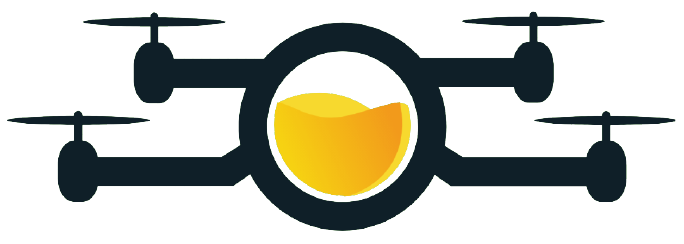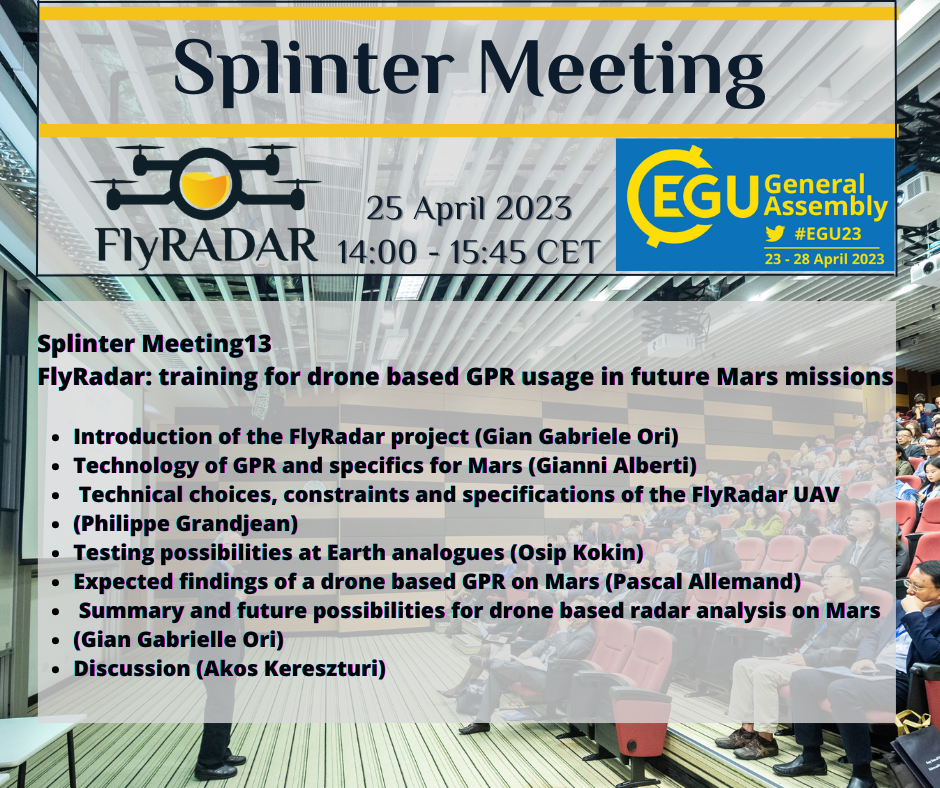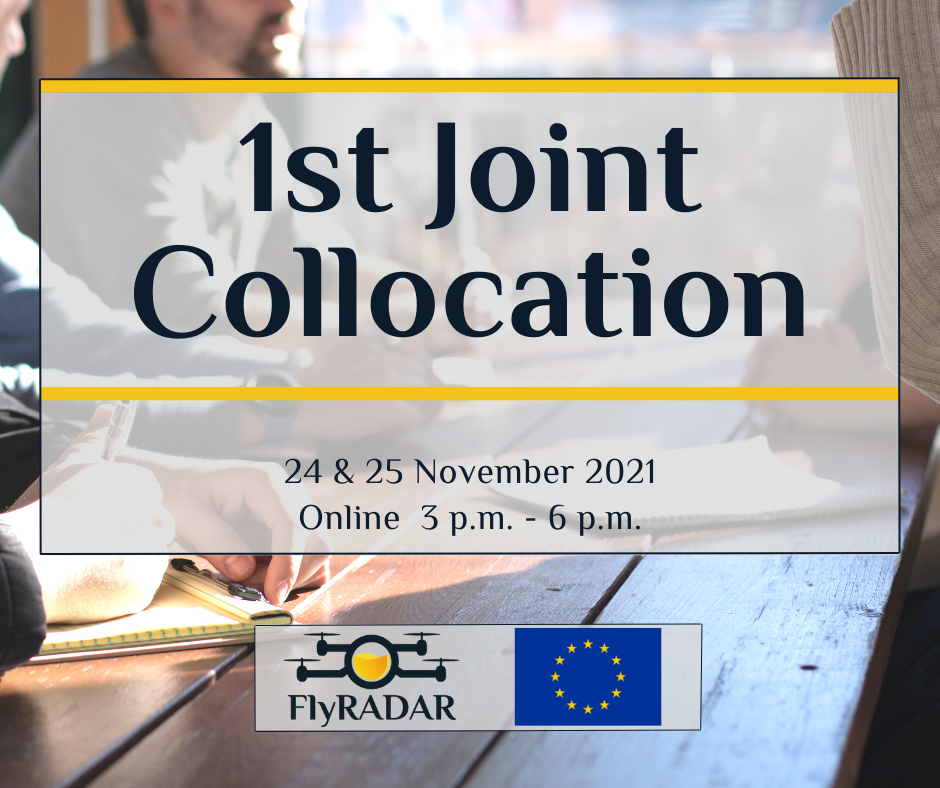

The project deals with the production of a dual-mode, low-frequency, radar installed on board of a light-weight UAV. The radar will operate into two modes: as Synthetic Aperture Radar (SAR) and as ground penetrating radar. Both instruments provide extremely interesting images that are extensively used in Earth and planetary observations.
However, these airborne systems are bulky and can be operated only from manned aircraft both planes and helicopters. On the other hand, the few drones that can sustain such a equipment are large and heavy. In both cases, the operations are expensive and has a complicate logistic. The quantum leap of FlyRadar consists of installing this radar system onboard small and light electric octocopters, providing low cost utilisation and easy operations. This affordable system will enlarge the user communities generating the possibility for an extensive use of FlyRadar taking advantage of the potentiality of this long-lasting innovation.
FlyRadar has passed the first fly tests!!!
It is a radar with double mode: a SAR and penetrating radar like the one flying around Mars (MARSIS and SHARAD).
The testing has demonstrated that a light electric drone can carry on a complex radar with a large antenna.
The bet was that a small drone powered by electric motors could carry the weight of the radar, batteries and an antenna bigger than it. Now, we can go ahead with the full integration.
Automatic flight plan of 1.5 km with payload of 4.5 kg!
The objectives of these tests are:
ü Check how the drone manage the Flight Plan
ü Check the setting of the PID of the drone and it new remote control
ü Check the autonomy with a dummy radar (3,2 kg) and the antenna (1,3kg with the installation of a spacer) for a total weight of about 4,5 kg.
The FlyRadar UAV is ready to fly!
The FlyRadar antenna ready for the first tests.
FlyRadar under integration in Lyon. The radar, just arrived from Naples, is going to be assembled.
The new fixation for the FlyRadar antennas
A GoPro camera was added to film the ground.
The radar’s GPS is fixed to the drone’s battery in the center.
First Test for the fully integrated FlyRadar.
Antenna, drone and radar do not interfer each other.
The FlyRadar Antenna
The FlyRadar Antenna

V General Assembly Meeting
Online, September 2023

2nd Joint Collocation
Online, January 2023

FlyRadar and Future of Mars Exploration
Budapest, October 2024

EPSC 2024 - Sessions and Splinter Meeting
Vienna, April 2023

IV General Assembly Meeting & Management Checkpoint
Online, January 2023

Mid Term Meeting
Pescara, June 2022

Multiplier Event - Settimana del Pianeta Terra
Pescara, October 2022

EGU 2023 - Splinter Meeting
Vienna, April 2023

Progress Meeting #1 and 1st Joint
Collocation and 3rd General Assembly
Online, November 2021

II General Assembly Meeting
Online, July 2021

DroneShow Robotics 2024
Sao Paolo, Brazil 2024













